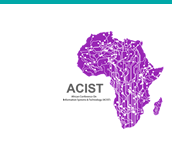Location
Harare, Zimbabwe and Virtual
Start Date
14-9-2023 2:30 PM
End Date
14-9-2023 3:00 PM
Description
Depletion of resources meant for both human and animal survival leads to competition for these. Human-wildlife conflict (HWC) occurs when these two parties compete for resources such as space, water, and food. If not properly managed, HWC can lead to loss of livelihoods and even loss of life. This paper discusses the design and development of an E-Wildlife Alert application that uses machine learning to detect dangerous animals. Using the Design Science Research method, a convolutional neural network is trained to build an artifact that detects five dangerous animals from an African context. The artifact is mounted on a robot that propels it around, providing a 360 degree turn for the image capturing camera to get a full view of the environment. On detecting any object in the way, the robot turns to avoid the obstacle. The E-Wild Life Alert application is able to detect five dangerous animals with an accuracy of up to 98%. On detecting any such animal in the vicinity, the application sends an SMS to a phone number in the system, logged as wildlife parks officer. This system would be useful, first to humans bordering areas with dangerous animals, as it protects them from these. Secondly, the tourism industry can benefit from the application as it reduces the number of wildlife killed on straying. In the long run, such an application is beneficial to nature in terms of conservation, promoting species diversity.
Included in
E-Wild Life Alert: Tackling the Human-Wildlife Conflict Problem
Harare, Zimbabwe and Virtual
Depletion of resources meant for both human and animal survival leads to competition for these. Human-wildlife conflict (HWC) occurs when these two parties compete for resources such as space, water, and food. If not properly managed, HWC can lead to loss of livelihoods and even loss of life. This paper discusses the design and development of an E-Wildlife Alert application that uses machine learning to detect dangerous animals. Using the Design Science Research method, a convolutional neural network is trained to build an artifact that detects five dangerous animals from an African context. The artifact is mounted on a robot that propels it around, providing a 360 degree turn for the image capturing camera to get a full view of the environment. On detecting any object in the way, the robot turns to avoid the obstacle. The E-Wild Life Alert application is able to detect five dangerous animals with an accuracy of up to 98%. On detecting any such animal in the vicinity, the application sends an SMS to a phone number in the system, logged as wildlife parks officer. This system would be useful, first to humans bordering areas with dangerous animals, as it protects them from these. Secondly, the tourism industry can benefit from the application as it reduces the number of wildlife killed on straying. In the long run, such an application is beneficial to nature in terms of conservation, promoting species diversity.



